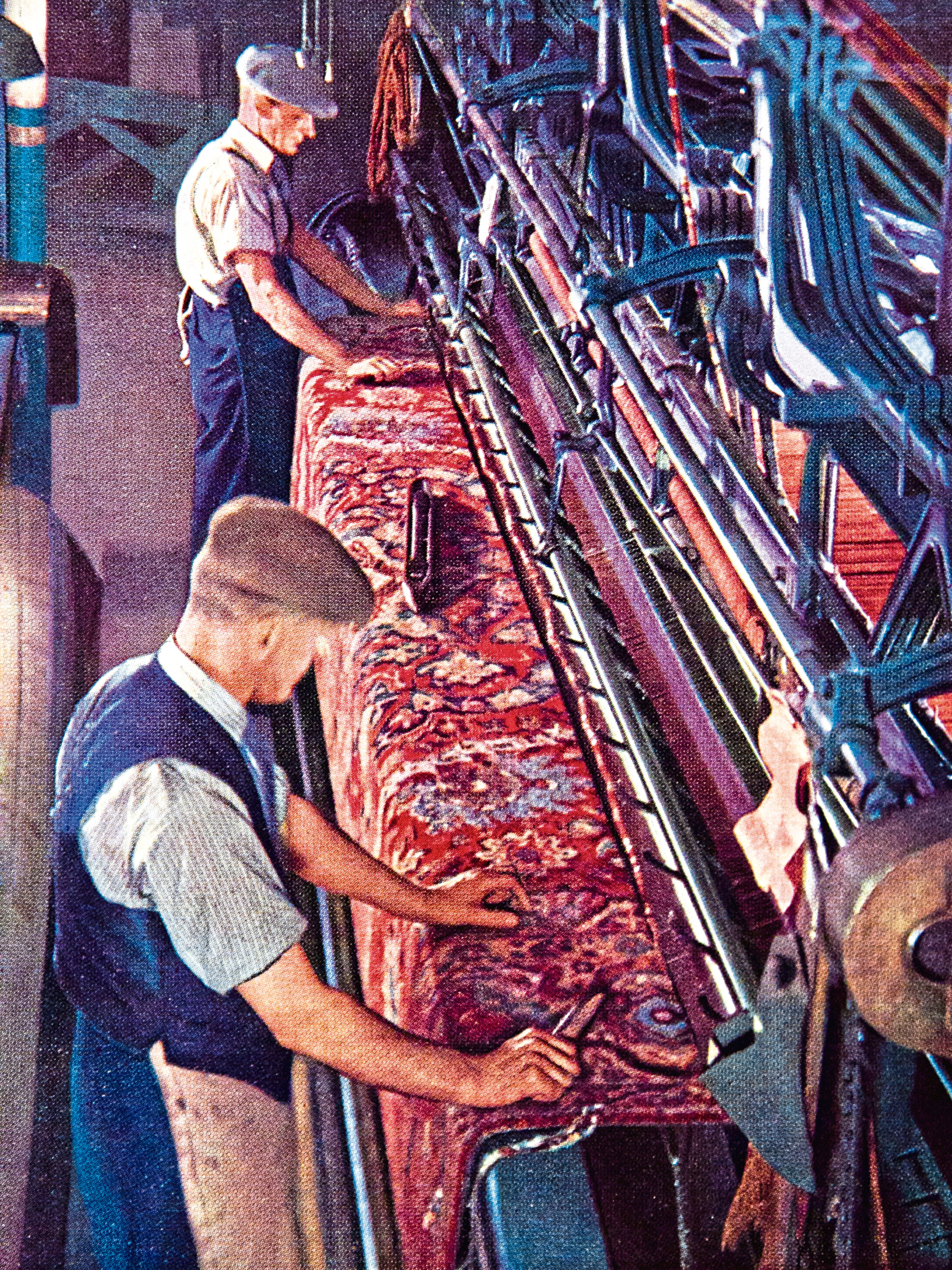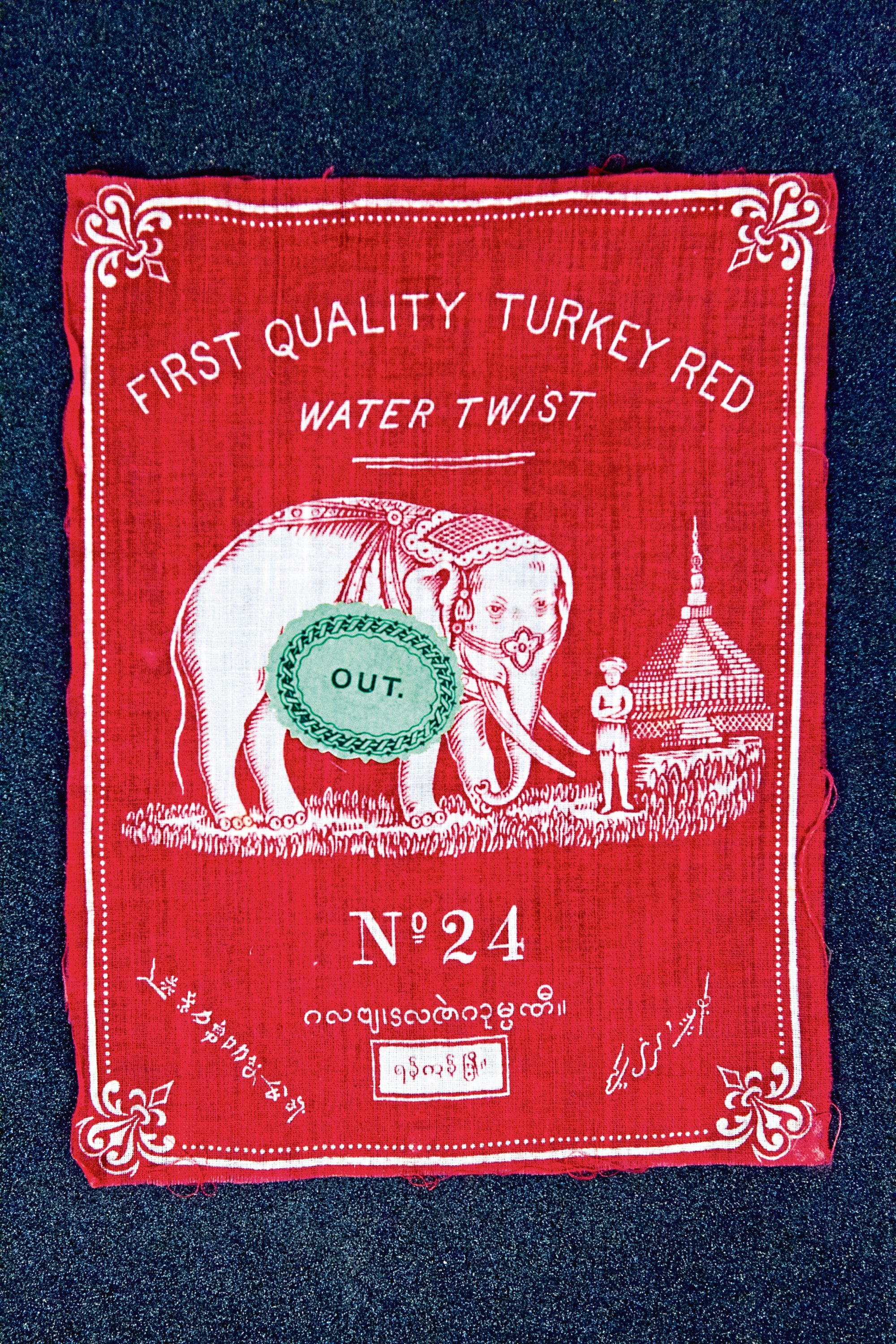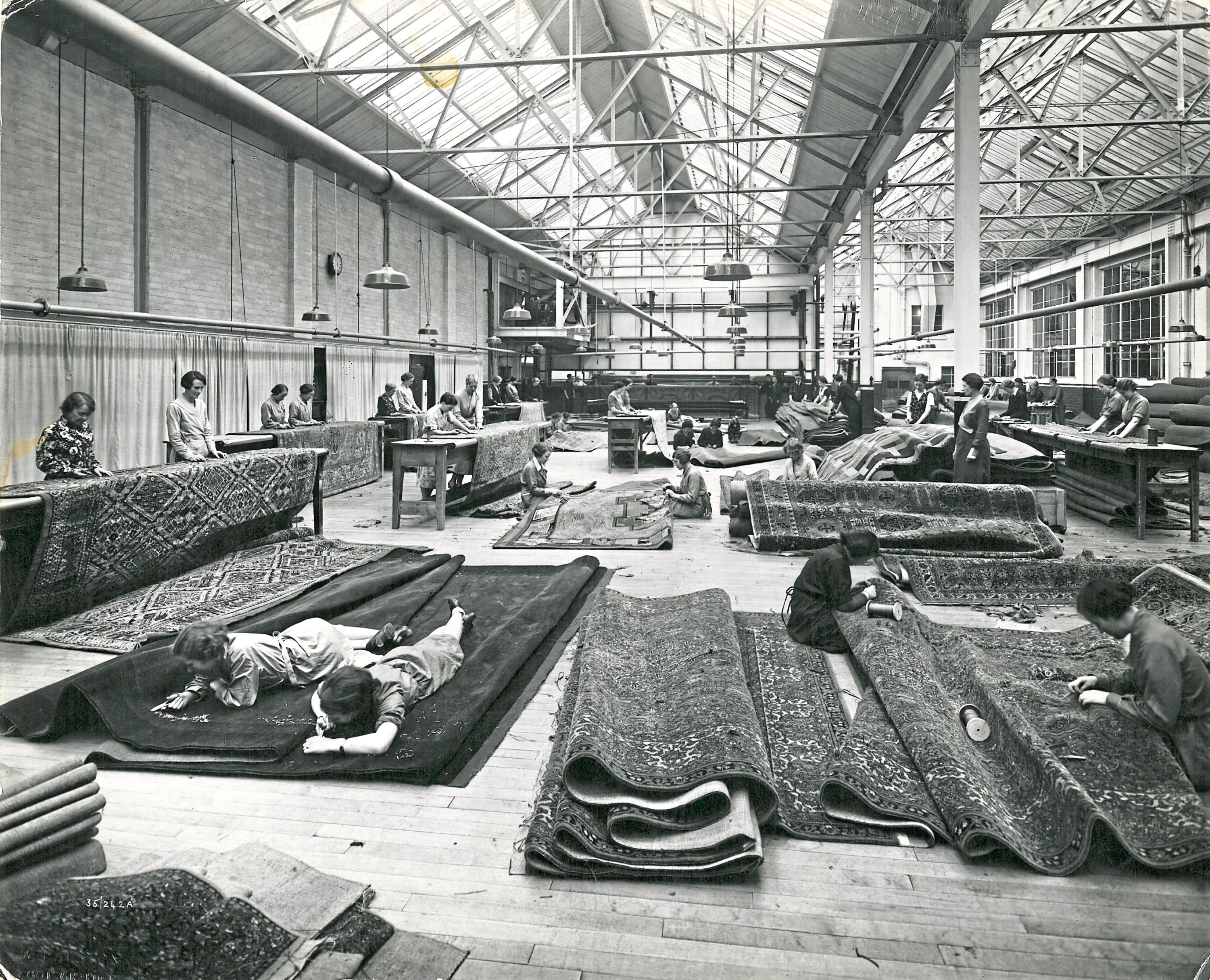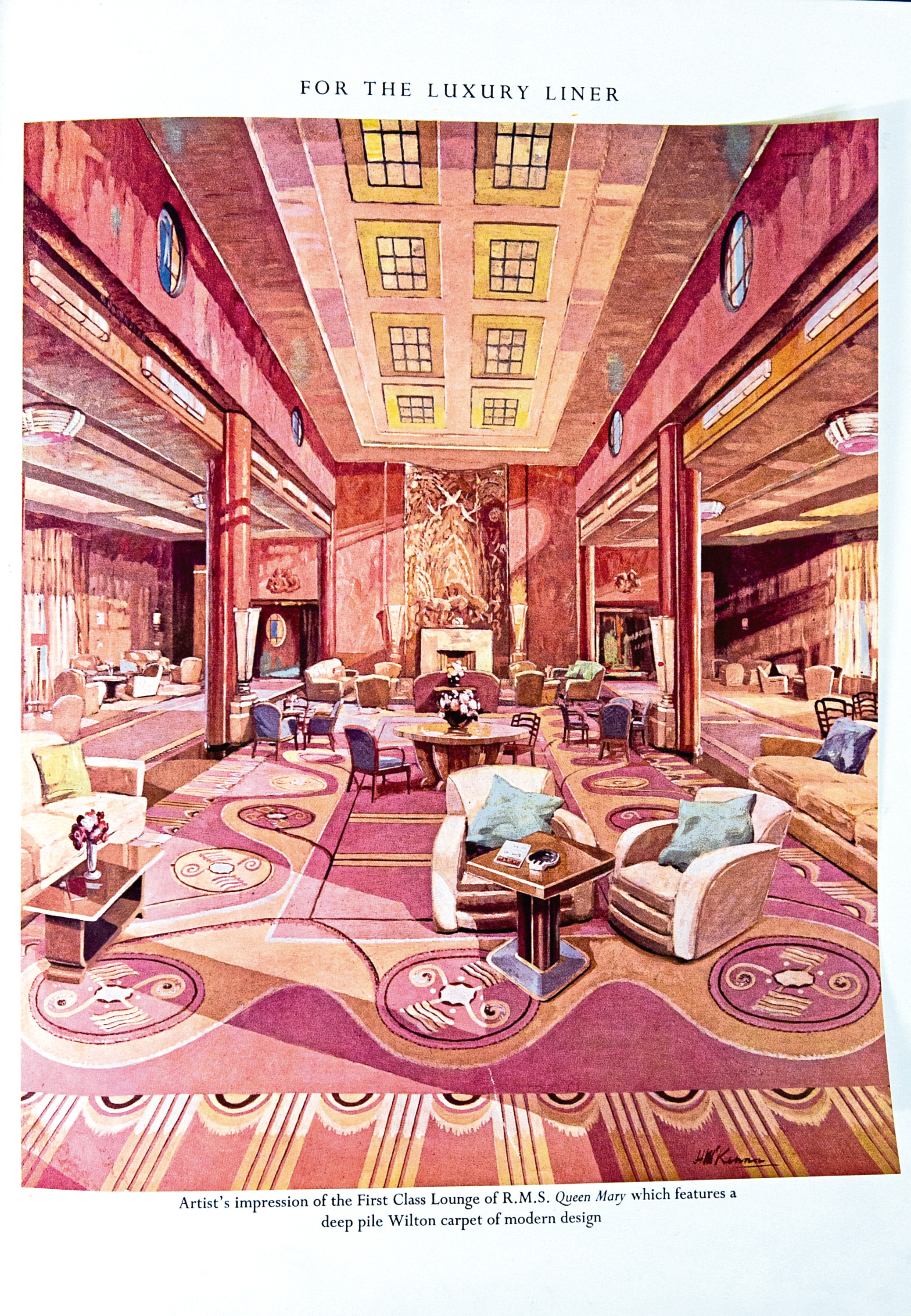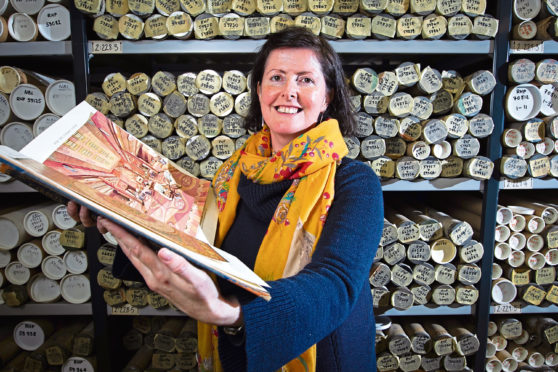
Trod by kings, queens, maharajas, movie stars, US presidents and first-class passengers on luxury liners, the carpets of Scotland’s once ruled the weaves.
From Westminster Abbey and the White House to the Titanic, Caledonian carpets once covered the floors of the world.
For 162 years, the two companies of Stoddard’s and Templeton Carpets were in the business of manufacturing the finest carpets money could buy.
Now a new exhibition opening on Friday showcases perfectly these splendid designs from a bygone era, all carefully preserved in the University of Glasgow’s archives.
Templeton created coverings for coronations in Westminster Abbey in 1911, 1937 and 1953. More than 10,000 people came to view the 188ft blue and gold carpets made for the coronation of Queen Elizabeth II in the firm’s Glasgow showroom before they were carefully crated up and transported to London.
The staff magazine at the time said: “It has been our privilege to make the coronation carpets and we shall always remember with pride that our young Queen, on her way to the throne, walked on Templeton carpets – as did her father and grandfather before her.”
The coronation carpets were woven in a seamless process invented by James Templeton, the founder of the firm, and the pile was short so it wouldn’t “impede the passage of the robes and trains of the peers and peeresses in the coronation procession.”
On moving into the White House in 1861, Abraham Lincoln’s wife Mary commissioned the Glasgow manufacturers and designers to produce a new carpet and was so delighted she wrote: “A new carpet of Glasgow manufacture and ingeniously made all in one piece, which had designs of fruit and flowers in vases, wreaths and bouquets.”
Famous designers such as Charles Rennie Mackintosh, 1960s fashion queen Mary Quant, and Arts and Crafts designer Charles Voysey, all made carpet patterns for the two companies.
Artist and Tutti Frutti writer John Byrne worked at Stoddard’s Elderslie and based his Slab Boys trilogy of plays on his experience working in “the small, paint-spattered dungeon where the apprentice designers mixed and ground colours for the design department.”
“Excellent design was always at the heart of Stoddard’s and Templeton’s – and is the reason their quality carpets were the most famous in the world,” says Claire McDade, of the University of Glasgow’s archives. “Crowned heads and ambassadors all wanted these carpets and they can be found in international embassies in India, China, France.”
Since the earliest days of the firm, carpets from Templeton factories were sent all over the world. The Scottish firm had a 100-year-old connection with royalty, with the earliest record of a carpet made for St George’s Chapel, Windsor for the baptism of King Edward VII in 1841. Queen Victoria stood on a Templeton carpet made for the Royal Reception Room, which was later sent to Washington for use in the British Embassy, and is now in the Smithsonian Museum in Washington.
Their carpets were supplied to the Maharaja of Jhodpur, the Gaekwar of Baroda and other Indian Princes. Fine carpets from Templeton looms were also made for the House of Lords, the House of Commons, the Houses of Parliament in Canberra, Wellington and Capetown, and for the Bank of England.
Luxury liners were carpeted too, including the Queen Mary, Queen Elizabeth and Caronia in the finest and most expensive contemporary designs of the 1930s.
The archives show that in 1962, 3,000 square yards of Templeton carpeting were installed in Marlborough House, a Royal Palace in London, which was often home to the Queen Mother and Prince Charles, and which was the former permanent home of Queen Mary.
Records from this era also show that Templeton carpets were laid in Number 10 Downing Street, the United Nations in New York, and in the Mayor of New York’s private residence. The firm also carpeted Culzean Castle, the Bank of Bermuda, Glasgow St Mungo’s Cathedral, Dunkeld Cathedral, and the National Mosque of Kuala Lumpur.
Today you can see still the vivid colours and intricate patterns of Stoddard’s and Templeton carpets in The Mitchell Library in Glasgow and in Glasgow Women’s Library.
The carpets were made by an army of workers at the Stoddard factory in Elderslie, Renfrewshire, and in Bridgeton, Glasgow, where Templeton Carpets was based until 1980.
In their 1950s heyday, Templeton was Glasgow’s single biggest employer with more than 7,000 employees. Their carpets were exported to all four corners of the globe with major commissions for parliaments, concert halls and cultural institutions, along with domestic interiors. Templeton’s major rivals were Stoddard’s, of Elderslie, founded in 1862 by Arthur Francis Stoddard, an American who refused to live in the US because of the slave trade.
The two carpet rivals merged in 1983 and the famous Templeton factory closed soon afterwards – it’s now a business and residential centre and home to a brewery and pub.
The advent of tufted carpets made from synthetic fibres and computer-aided design brought about the decline of Scotland’s carpet industry by the 1970s, and the merged company, Stoddard International plc, went into liquidation in 2005.
But its archive of designs, patterns and carpets, including those made for the Titanic, as well as for the James Cameron feature film about the doomed ocean liner, was preserved by the University of Glasgow, Glasgow School of Art and Glasgow Museums, now Glasgow Life.
Follow the Threads, at The Lighthouse, Glasgow, from April 18 to May 27

Enjoy the convenience of having The Sunday Post delivered as a digital ePaper straight to your smartphone, tablet or computer.
Subscribe for only £5.49 a month and enjoy all the benefits of the printed paper as a digital replica.
Subscribe